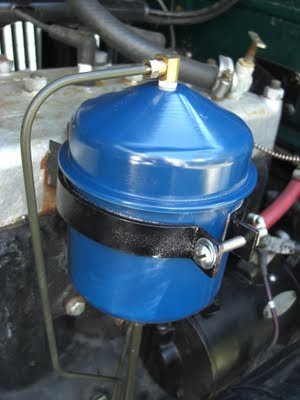 |
| Claire Weatherly finds out that this is HER Autoharp! |
Back in late November I had an email from an old friend, Jim Weatherly, a former Huntsville resident now living in St.Paul, Minnesota. Margo and I were good friends of the Weatherly family (Jim and Anne) before they moved north and they honored us by asking us to be their children's (Christopher and Claire) Godparents. Jim contacted me to let me know that Claire had asked for an Autoharp for Christmas. He needed advice on what to buy.
I began by telling him in no uncertain terms to not buy a new one. All production was shipped overseas in the early 1980's -- first to Japan, subsequently to Korea and then China. I have worked on some of these later models and wouldn't take one as a gift. I certainly would never recommend that someone buy a new one. I told Jim to look for a US-built 1970's vintage Autoharp in good shape and that if he found one, I would restring, reconfigure, and rebuild it. The quest began. After a couple of unsuccessful bids on eBay, Jim finally submitted a successful bid on a 1970's Berkshire model 15-chord B-style Oscar Schmidt Autoharp. He had it shipped to me.
When the instrument arrived around the 5th of December, I inspected it thoroughly. It still had its original strings and they were all intact. You can tell the original strings by the way they were attached to the tuning pins and wrapped around the pins. The instrument smelled "fresh." It had not been stored in a mildew or mold-infested environment. The finish was remarkably untouched. The felt dampers on the chord bars appeared brand new and had never been attacked by moths. The only condition issue I found was a minor delamination of the maple pin block at the top of the Autoharp. This is easily repairable.
I ordered a new set of strings and they arrived in a few days. Although I was concerned that the string quality might have suffered over the years, the new strings turned out to be top-notch. They were all precisely cut and the windings on the wound strings were all tight. There were no "buzzers." (Sometimes the windings will be loose at the end and cause a wound string to buzz when played.)
 |
| Gluing the pin block |
One issue that every Autoharp player faces is the decision of what chords to include on an individual instrument and how to arrange them. I chose an arrangement suggested by Evo Bluestein, a remarkable Autoharp player from Fresno, California. He markets a custom-built Autoharp called the Evoharp, and the 15-chord model has its chord bars arranged (from the tuning pin end to the anchor bar end) as follows: Fmaj, Dmin, C7, Cmaj, Amin, G7, Gmaj, Emin, D7, Dmaj, Bmin, A7, Amaj, F#min, E7. With this arrangement, the Autoharp may be played in the major keys of C, G, D and A, and the minor keys of D minor and A minor. It's a good flexible selection of chords and the pattern is such that each chord "set" is the same for any given key in which the instrument is being played.

After reassembling the Autoharp and relabeling the chord bars, I tuned it several times over the next few days to stretch and stabilize the strings and fine tune it. It turned out to be a fine sounding instrument, brought back to life. It will provide many years of service.
Claire had no clue that she was receiving this gift. I met the Weatherlys for lunch at Jason's Deli in Huntsville. When we informed her that this was her Autoharp, she was totally speechless. I felt that my Elf Duty was time well spent.





































